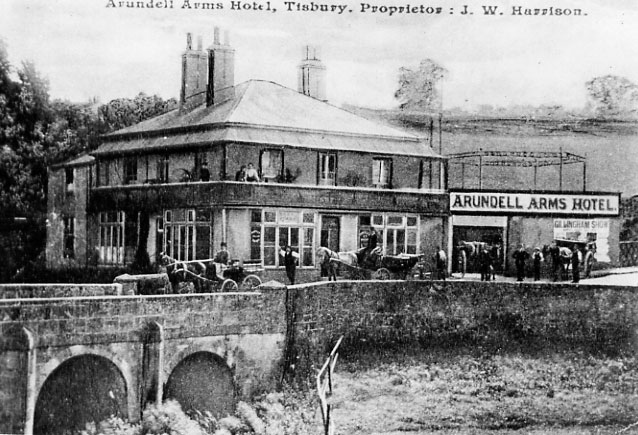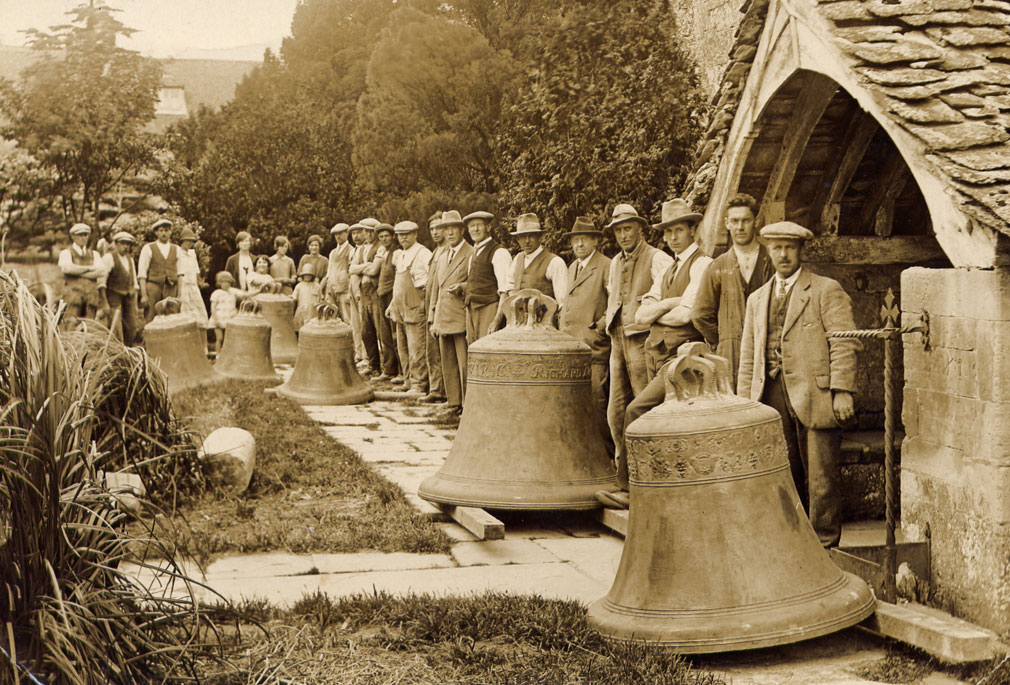Tisbury and its history
Tisbury is the most prominent of the Nadder Valley villages. It is situated on the steep northern slopes of the valley underlain by the light grey Portland stone used for the two Salisbury Cathedrals and many other local buildings. Quarrying, therefore, would have been an important local industry from very early times.
Because of the marshy nature of the river, the original inhabitants of the area may well have lived east of the Nadder at the hilltop fortification known as Castle Ditches. It was the Saxons who first descended to the valley sometime between the 6th and 8th Centuries to create a series of settlements one of which became known as Tysse’s Burgh, ‘the stronghold of Tysse’s people’. An Anglo-Saxon monastery of some importance also developed here and continued until the creation of King Alfred’s new abbey at Shaftesbury in the mid-880s.
By the late l2th Century, the little community along the Nadder had become sufficiently prosperous to replace its earlier wooden Saxon church with the prominent parish church of St John the Baptist. The requirements of an increasing population led to many changes resulting in the fine cruciform building we now see today. This included the raising of the roof in the mid-l5th Century to allow the new clerestory to flood the church with light. The earlier 60-foot spire was discarded in l762 after lightning strikes had brought it tumbling into the north aisle for the second time in twenty years!
East of the church lie the graves of John Lockwood and Alice Kipling, the parents of the author Rudyard Kipling. After a long and distinguished artistic career in India, the Kiplings retired to a residence along Hindon Lane which they renamed ‘The Gables’. Their famous son visited them here and, whilst working on his novel ‘Kim’, used one of the pupils from Tisbury Boys’ School as the model for the main character.
The construction of the London to Exeter Railway in l859 transformed the tiny village of Tisbury, allowing it to develop a much larger commercial and light industrial base. But this would not have been possible without the foresight of the speculator, Archibald Beckett. He constructed a new road, the current High Street, through the village replacing the narrow causeway which can still be seen winding between houses to the east. Beckett also built the red brick Victorian shops and houses which fringe the road and an inn, the Benett Arms and finally the brewery in Church Street which has now been converted into apartments. Beckett’s initiative was complemented by other new roads straddling the developing community and constructed by the Arundell and Morrison families of Wardour Castle and Fonthill Park. Thus, arose the framework for the Tisbury we see today.
Among the earlier residents of the village was Thomas Mayhew. Born in l593, he used a legacy from his father to become apprenticed to a mercer in Southampton and prospered to the extent that he could move his business to New England. Eventually he purchased the development rights from the Duke of York for the off-shore islands of Martha’s Vineyard and Nantucket where he and his family helped to establish the townships of Tisbury and Chilmark.
To the east of the village lies the magnificent outer gateway of Place Farm. Built for the abbesses of Shaftesbury in the late l4th and l5th Centuries, it incorporated large and elaborate buildings for residence, worship, agriculture and tithe collection. For the latter purpose, the farmyard contains a tithe barn, arguably the largest in England, its vast structure of local stone supporting a thatched roof which was originally covered by stone tiles.
Tisbury continues to reflect the fortunes of rural life in South Wiltshire.





